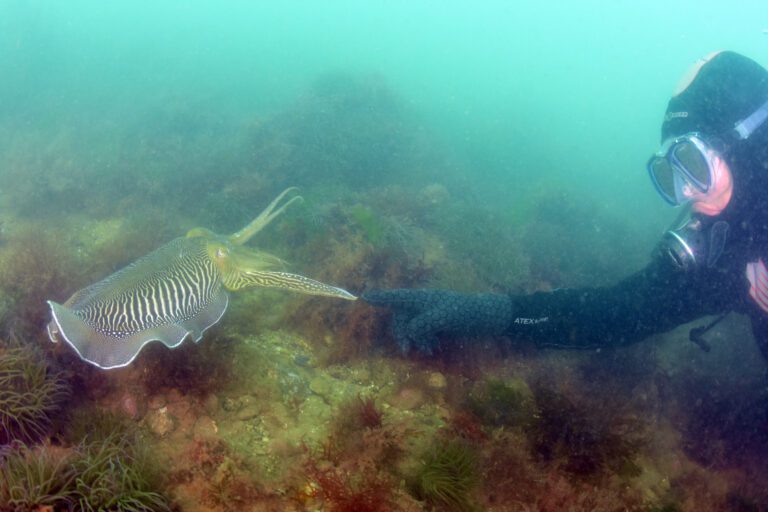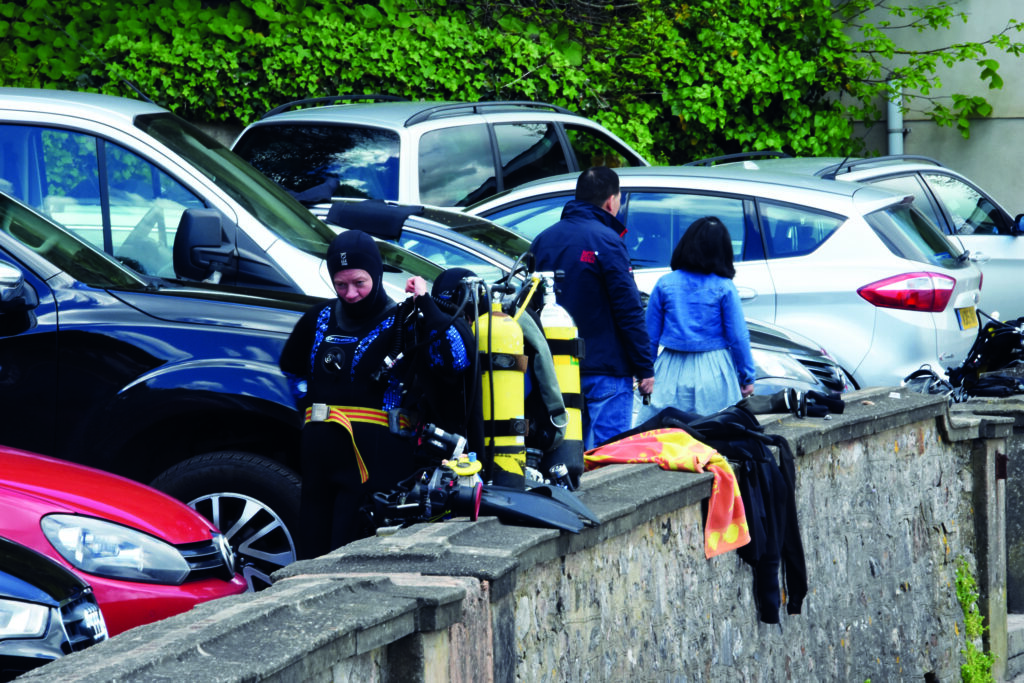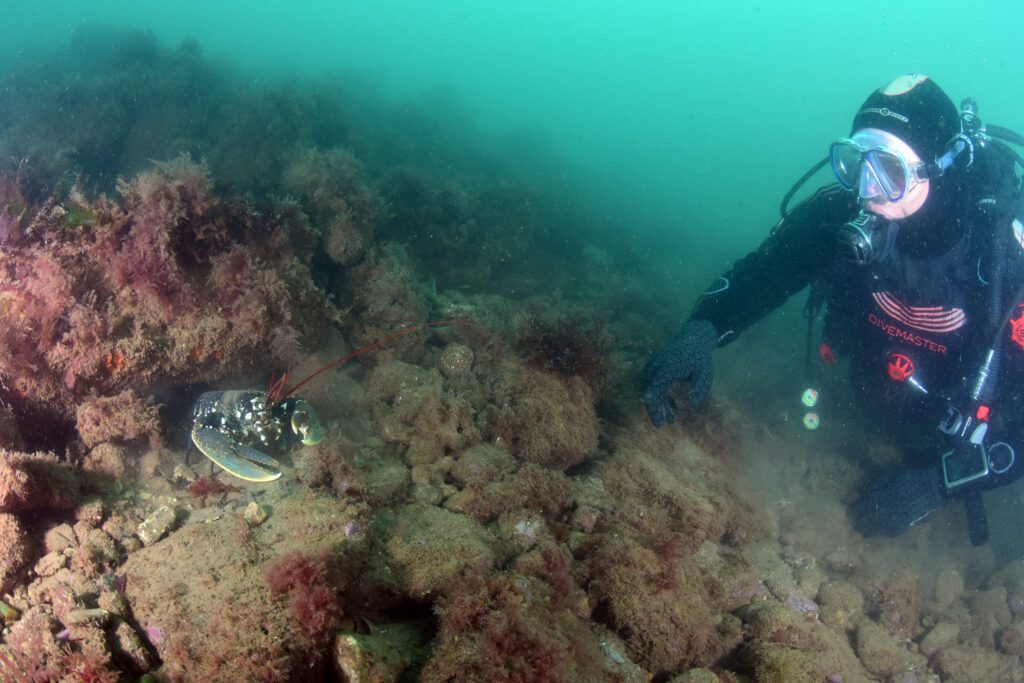JEREMY CUFF visits south Devon to dive at the iconic and understandably popular Babbacombe Bay site, especially renowned for its cuttlefish encounters
Babbacombe Bay had been on my dive radar for quite a while. My previously planned visits hadn’t happened because of adverse weather, but this time I had chosen a May weekend, booked some accommodation and hoped that the weather would turn out fine.
As the weekend approached the unfavourable easterlies subsided and the weather was forecast to be good, but most importantly there was a light westerly. Easterlies can kill the vis.
Winding the clock back to early March, I had made a point of visiting Babbacombe while on a motorcycling weekend in Devon to check out the logistics of what was involved with diving there (access, parking, availability of tanks/fills, food/drinks and so on). I was glad I had done that, because it gave me the knowledge of how best to plan the trip.
Babbacombe is a pleasant clifftop town located within the “English Riviera” of the Torbay area. It’s on the north-eastern side of Torquay, sheltered behind a series of headlands that include Hope’s Nose and boasts hotels and apartments, pubs, restaurants and cafes, a funicular railway, a famous model village and a theatre.
The clifftop gardens offer fine vistas over the bay and, if the weather is very clear, it’s possible to see all the way to Lyme Regis, West Bay and even Portland, many miles to the east.
In the diving community this sheltered bay (unless there’s an easterly wind) is known primarily as a springtime hotspot for the cuttlefish that gather there to court, mate and lay eggs, though there are plenty of opportunities for other encounters and sightings. At this time of the year, it could fairly be renamed Cephalopod Central.
My friend Simon, who hadn’t dived in the UK for many years, would be my buddy for the weekend; it would be a chance for him to re-acquaint himself with the type of conditions in which he had learnt to dive as a teenager.
On the Friday evening, heading south and west along the A303 from Wiltshire, I collected him from his home near Honiton and we sped determinedly down to Babbacombe, highly motivated by the thought of a pub meal!
Arrival at the site
Babbacombe Bay is accessed by a very steep single-track road next to the theatre, with a tiny car park at the bottom. It’s the sort of road that freaks out panicky drivers, and during the weekend we witnessed an amusing high-revving burning-clutch incident after a driver had stalled on the hill and rolled backwards into a wall.
The Diver’s Down dive-centre based up in the town has since closed, which is a pity. It also ran the café next to the car park and provided fills and rental equipment. There are a number of other centres in Torquay, however.
On both days, we were up quite early to drive my pick-up to the car park and ensure that we got a space. If the car park is full, it’ll turn your pleasant day of diving into a frustrating palaver.
Although we were early, a number of divers would already ge there, including some that had travelled all the way down from Cardiff. Nabbing a parking space is the key to the day.
Dive briefing
As Babbacombe Bay is a shore-dive, you have three basic choices. You can climb down the steps onto the tiny pebble beach in front of the café and choose your entry-point from there, or head past the café to the boat-slip and try that.
It’s also possible to walk out onto the stone jetty and climb down the steps to enter from there. If choosing the boat-slip or the jetty from which to enter and exit the water, great care should be taken with any slippery seaweed that could cause a nasty fall.
You can decide to dive at any time regardless of the tide, because there’s very little in the way of current, but it’s much easier to get in and out of the water during the higher-tide periods. At low tide it can be tricky keeping your footing while navigating slimy and unhelpfully located boulders with heavy dive-kit.
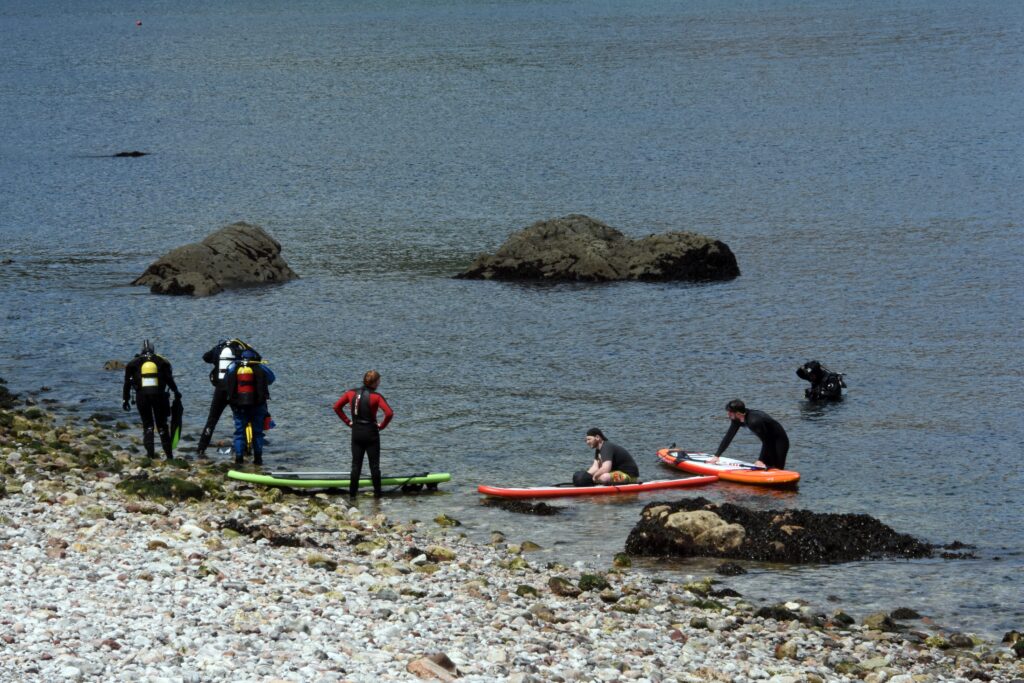
Wherever you choose to enter the water, there is a wide area available to cover once you’re on the dive. You can choose to stay in the immediate shallows among the boulders, or head out into deeper areas to explore underwater rockeries, weed-beds and sandy expanses.
Even at the deeper points the diving is relatively shallow (not much more than 10m), making it a very good idea to use an SMB because of the boats around. In most areas distinctive landmarks are lacking, so it’s easy to get disorientated and end up swimming out to sea rather than back to shore. Dusting off your underwater navigation skills is very helpful here.
Visibility can also vary tremendously, so buddy-pairs must keep close to one another to avoid getting separated.
One distinctive landmark worth looking out for is Mushroom Rock – its resemblance to a toadstool is immediately apparent if you find it while heading into the bay from the pebble beach or slipway.
The dives
Essentially, the dives in Babbacombe Bay are naturalist rather than scenery or wreck dives. It’s the kind of place where an observant diver who is not in a hurry can be rewarded with interesting sightings. For this reason, the dive is quite popular with underwater photographers.
Those cuttlefish gatherings which can be spectacular if you get the timing right, combined with perfect conditions. We didn’t quite manage that, because the peak of the action had passed. Perhaps two to three weeks earlier (in late April) might have been the optimum that year, but it’s not an exact science.
We did, however, still get a few cuttlefish sightings, with Simon and I spending a lot of time with one male in particular. There was even an ET moment when Simon reached out and the cuttle returned the gesture by appearing to reach back while I shot images.
Simon had never seen a cuttlefish on a dive before and found the encounter very rewarding. He had been reading a book about cephalopod intelligence at the time, which added to the fascination.
Divers can also expect to see various species of crab, including hermit and edible, and there was no shortage of pugnacious spider crabs, the ones that rear up at the perceived threat of a diver invading its personal space with a camera.
Other sightings included a flounder, a common lobster, anemones, dead man’s fingers, several wrasse and blennies. Look closely and we could see an abundance of fish fry; the bay is obviously an important fish nursery because of its sheltered aspect. You can also often find pipefish skulking in the weed-beds.
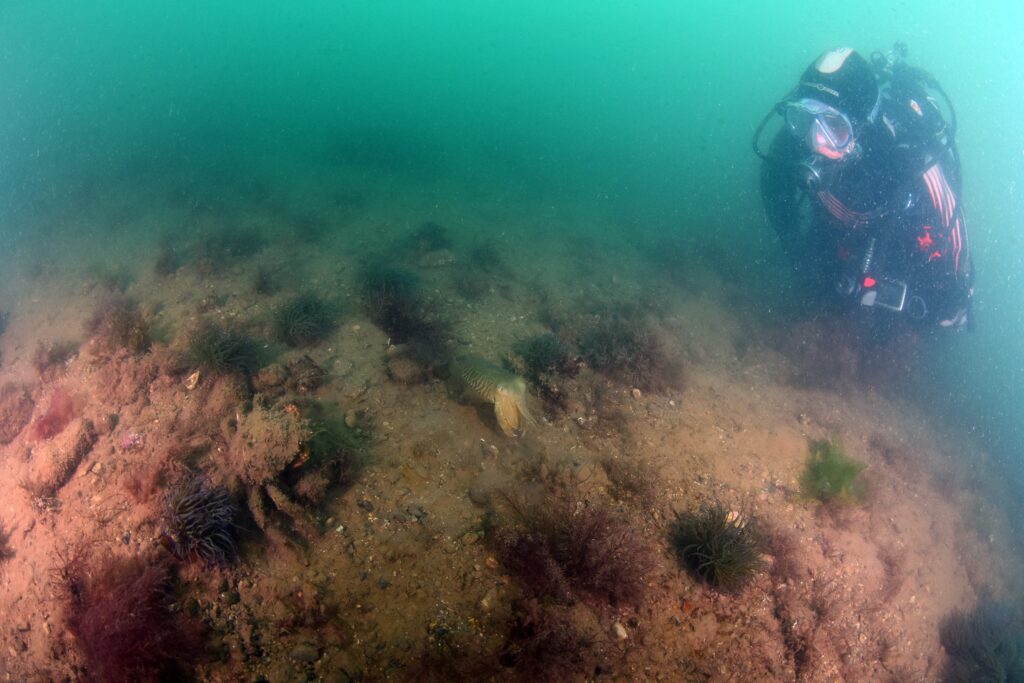
On the stone jetty between dives we talked to some fishermen who had caught dogfish and mackerel, and there was also a seal that regularly hung out in the bay and was very tolerant of people (and perhaps lucky divers).
Depending on the time of your visit, you can be assured of seeing other interesting underwater species. Historically, even seahorses are known from the bay, though I’m not sure when they were last seen in the area. Perhaps they’re still there somewhere.
WHAT YOU NEED TO KNOW
Type of dive: Shore dive (much easier at high tide).
Depth Usually within the 2-10m range.
Marine life / What to look out for: Cuttlefish (especially in the spring), several species of crab, lobster, pipefish, flounder, blennies, anemones, dogfish, blennies, wrasse, seals, and much more.
Visibility: Variable depending on wind direction, run-off and other factors, but can be 6-8m if you’re lucky. We experienced 3 or 4m at best during our visit.
Seabed: Boulders and rocks, rubble, weed-beds, sandy expanses and gentle slopes.
Hazards: Boat traffic, disorientation, low visibility and boulders on entry / exit.
Photographs by Jeremy Cuff
Also on Divernet: Shallow Wreck-Dive In Scapa, Diving Chesil Bank, Exploring HMT James Fennel, Blue Shark Encounters In Cornwall, Diving Kimmeridge Bay, The ‘Wick’ At St Abbs, The Swanage Pier Dive, The Countess Of Erne
